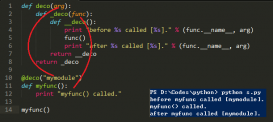本文实例讲述了Python读写ini文件的方法。分享给大家供大家参考。具体如下:
比如有一个文件update.ini,里面有这些内容:
|
1
2
3
4
5
6
7
8
|
[ZIP]EngineVersion=0DATVersion=5127FileName=dat-5127.zipFilePath=/pub/antivirus/datfiles/4.x/FileSize=13481555Checksum=6037,021EMD5=aaeb519d3f276b810d46642d782d8921 |
那就可以通过下面这些代码得到MD5的值,简单吧
|
1
2
3
4
5
6
7
|
#!/usr/bin/env python# -*- coding: utf-8 -*-import ConfigParserconfig = ConfigParser.ConfigParser()config.readfp(open('update.ini'))a = config.get("ZIP","MD5")print a |
写也很简单:
|
1
2
3
4
5
6
7
8
9
10
|
import ConfigParserconfig = ConfigParser.ConfigParser()# set a number of parametersconfig.add_section("book")config.set("book", "title", "the python standard library")config.set("book", "author", "fredrik lundh")config.add_section("ematter")config.set("ematter", "pages", 250)# write to fileconfig.write(open('1.ini', "w")) |
修改也不难(添加内容):
|
1
2
3
4
5
6
7
8
|
#!/usr/bin/env python# -*- coding: utf-8 -*-import ConfigParserconfig = ConfigParser.ConfigParser()config.read('1.ini')a = config.add_section("md5")config.set("md5", "value", "1234")config.write(open('1.ini', "r+")) #可以把r+改成其他方式,看看结果:) |
修改内容:
|
1
2
3
4
5
6
7
|
#!/usr/bin/env python# -*- coding: utf-8 -*-import ConfigParserconfig = ConfigParser.ConfigParser()config.read('1.ini')config.set("md5", "value", "kingsoft") #这样md5就从1234变成kingsoft了config.write(open('1.ini', "r+")) |
删除部分就懒得写了,感兴趣的自己看文档:
remove_option( section, option)
Remove the specified option from the specified section. If the section does not exist, raise NoSectionError. If the option existed to be removed, return True; otherwise return False. New in version 1.6.
remove_section( section)
Remove the specified section from the configuration. If the section in fact existed, return True. Otherwise return False.
希望本文所述对大家的Python程序设计有所帮助。












